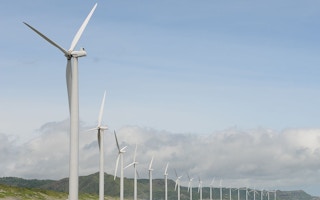Advances in renewable energy technology have been at the forefront of efforts to address and tackle global climate change.
To continue reading, subscribe to Eco‑Business.
There's something for everyone. We offer a range of subscription plans.
- Access our stories and receive our Insights Weekly newsletter with the free EB Member plan.
- Unlock unlimited access to our content and archive with EB Circle.
- Publish your content with EB Premium.
But this does not mean that the spread of wind and solar farms around the world has been entirely uniform. Europe and the US have long benefited from the technical knowledge, state tariffs and supports and – perhaps most crucially – the necessary level of investment.
However, for those looking to invest in renewable energy projects, a number of economic drivers have made the risk-to-return ratio on offer in these more mature markets less attractive than it once was.
In turn, this has led many to consider the emerging renewable energy markets, and especially Southeast Asia, as fertile ground for their investments.
Across a number of countries in the region, including Thailand, Singapore, Vietnam, a combination of growing energy demand, strong wind and solar resources, and political support for development have made investing in renewable energy an attractive prospect.
Ensuring those projects secure the necessary financing to enable that development, however, remains a challenge, with a large proportion of Southeast Asian projects considered unbankable. However, there are two distinct risk factors to consider when assessing whether a project is likely to attract financing: sovereign risks and project bankability risks.
Increasingly, investors are recognising that lenders will only be willing to work with a single major source of risk. If a particular market carries with it significant political or economic risk, the project fundamentals themselves must be flawless if it is to be supported by a bank or other lender.
“
If a particular market carries with it significant political or economic risk, the project fundamentals themselves must be flawless if it is to be supported by a bank or other lender.
In order to secure capital, investors and developers need to mitigate project risk as far as possible. Decisions on how to mitigate risks taken at an early-stage can, therefore, have a strong bearing on a project’s bankability and profitability further down the line.
But, what tactical measures should investors consider to ensure that their investments are bankable at a project level?
Taking the example of Vietnam—one of the most favourable targets of clean energy investment, owing to strong economic growth and a Government commitment to developing a low carbon economy—the most significant challenge is to manage risks that include the high cost of capital.
This means that investors need to be able to accurately identify the risks to a project, adopt strategies to manage it, and show lenders that they have the knowledge and experience to do so.
A project manager with a deep knowledge of the local market can add particular value at this stage.
It might sound obvious, but developing a comprehensive construction plan is another crucial factor when it comes to ensuring project bankability.
Indeed, it is during the construction phase that, rather than mitigating risk, investors simply look to displace it – often on to a local engineering, procurement and construction (EPC) contractor.
This practice, the norm in emerging markets like Vietnam, while having the advantage of allowing investors to work with EPC contractors already familiar to them, rarely mitigates project risks.
Instead, it can make it more difficult for investors to clearly identify the risks they face, especially when local EPC contractors lack experience of wind or solar farm construction – an inherent feature in emerging markets. This lack of clarity inevitably drives up the degree of risk involved, making a project less attractive for financing.
To mitigate a lack of renewable energy construction experience among construction teams, investors can look to engage an owner’s representative to oversee construction through direct contracting with suppliers and contractors.
While this approach is sometimes criticised on the grounds that it risks creating too many project interfaces, when done correctly a representative who has the necessary experience in both the local market and clean energy construction will be able to save on capital expenditure costs, and subsequently reduce unnecessary exposure to risk.
Additionally, by bundling risk in the construction plan, a good project manager will allocate risks appropriately to the contractors best able to handle them. For instance, making the balance of plant contractor responsible for logistics reduces the risk of delays due to plant availability.
In higher risk markets, demonstrating to lenders that all project risks have been understood and properly accounted for will ultimately help secure their backing.
When compared with the mature markets of Europe and Asia, renewable energy development across Southeast Asia is still very much in its infancy.
And this means that, as investors look to capitalise on the potential rewards these new markets offer, there really is no substitute for experience.
Having an experienced risk management team, one familiar with the local language, regulations and business cultures – and the specific obstacles to project development that can arise – is the best way for investors to ensure their financial aims are realised, and further the spread of renewable energy across Southeast Asia.
Aaron Daniels is managing director of Modern Energy Management. This was exclusively written for Eco-Business.











